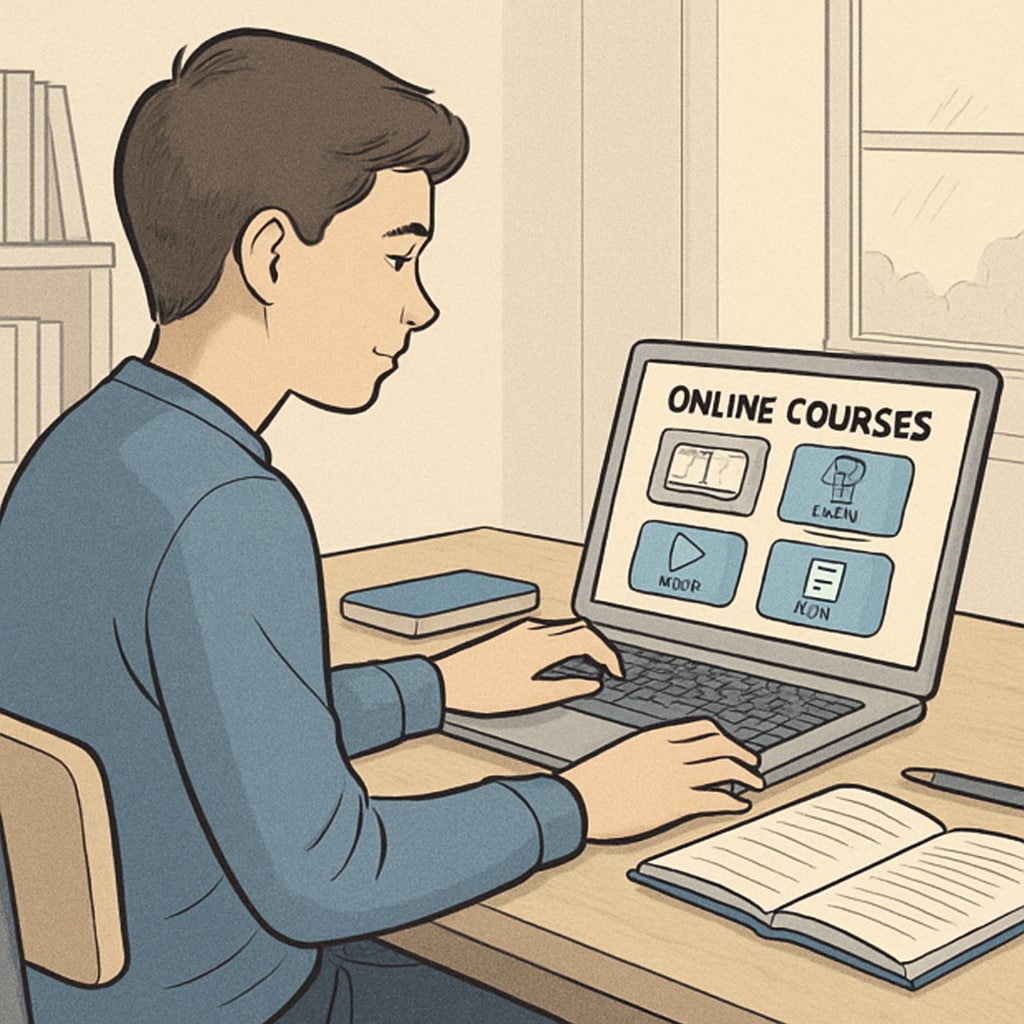In today’s fast-paced academic environment, finding the right educational courses, extracurricular learning, and resources is essential for high school students aiming to complement their classroom education. These resources can serve as a stepping stone toward academic success, enabling students to explore topics in more depth or strengthen weak areas. This article provides a roadmap for high school students to discover diverse options, from online platforms to offline institutions, and free tools to paid courses.
Online Platforms for High School Learning
The internet is a treasure trove of learning opportunities for high school students. From interactive tutorials to full-fledged courses, students can access a vast array of resources at their fingertips. Some of the most popular online platforms include:
- Khan Academy: Offers free courses on various subjects like math, science, and humanities with engaging video lessons and practice quizzes. Learn more on Khan Academy.
- Coursera: Provides access to university-level courses on topics ranging from computer science to literature. Some courses are free, while others require payment for certification. Visit Coursera.
- EdX: Similar to Coursera, EdX offers free and paid courses from top universities worldwide, perfect for students looking to dive deeper into specific subjects. Explore EdX.

Offline Institutions and Tutoring Centers
Though online learning has gained popularity, offline institutions and tutoring centers remain a reliable choice for students who prefer face-to-face interaction. High schoolers can consider options such as:
- Local Tutoring Services: Many neighborhoods host tutoring centers specializing in subjects like mathematics, science, and language arts.
- Community Centers: Community organizations often offer free or low-cost workshops to help students improve their skills.
- Specialized Programs: Programs like STEM camps or writing clinics provide hands-on experience, allowing students to develop practical skills.
These institutions not only provide academic support but also foster personal interactions and mentorship opportunities that online platforms may lack.

Free Resources for Budget-Friendly Learning
Not all quality education has to come with a price tag. High school students can take advantage of numerous free resources to enhance their learning experience:
- Open Educational Resources (OER): Websites like OER Commons offer free textbooks, lesson plans, and interactive tools.
- YouTube Channels: Channels like CrashCourse provide high-quality educational videos tailored for high school learners.
- Public Libraries: Libraries often provide free access to books, e-books, and workshops.
These options cater to students who are self-motivated and willing to explore content independently.
Paid Courses for Specialized Learning
For students who want more structured learning or access to advanced resources, paid courses can be a worthwhile investment. Platforms like Udemy and Skillshare offer affordable courses on niche topics, while institutions like The Princeton Review provide specialized SAT and ACT prep programs. When choosing paid options, students should consider:
- The course curriculum and its alignment with their academic goals
- User reviews and testimonials
- Whether certification is included
Investing in paid resources can provide high schoolers with a competitive edge, especially when preparing for college admissions.
How to Choose the Right Resource
Selecting the right resource depends on individual needs, learning preferences, and goals. Here are some tips to help students make informed choices:
- Assess Your Needs: Identify the subjects or skills you need to improve.
- Explore Reviews: Research user feedback to understand the effectiveness of the resource.
- Set a Budget: Decide how much you’re willing to invest, and prioritize free or low-cost options if necessary.
By taking a strategic approach, students can maximize the benefits of both free and paid educational resources.
In conclusion, the range of educational courses, extracurricular learning, and resources available today is vast and varied. From online platforms to offline institutions, free tools to specialized paid programs, high school students have more options than ever to supplement their education and achieve their goals. By carefully evaluating their needs and preferences, students can unlock the full potential of these resources and set themselves up for success.
Readability guidance: Use shorter paragraphs and lists to summarize key points. Ensure that long sentences are minimized, and transitions such as “however” and “in addition” are used to maintain flow.


